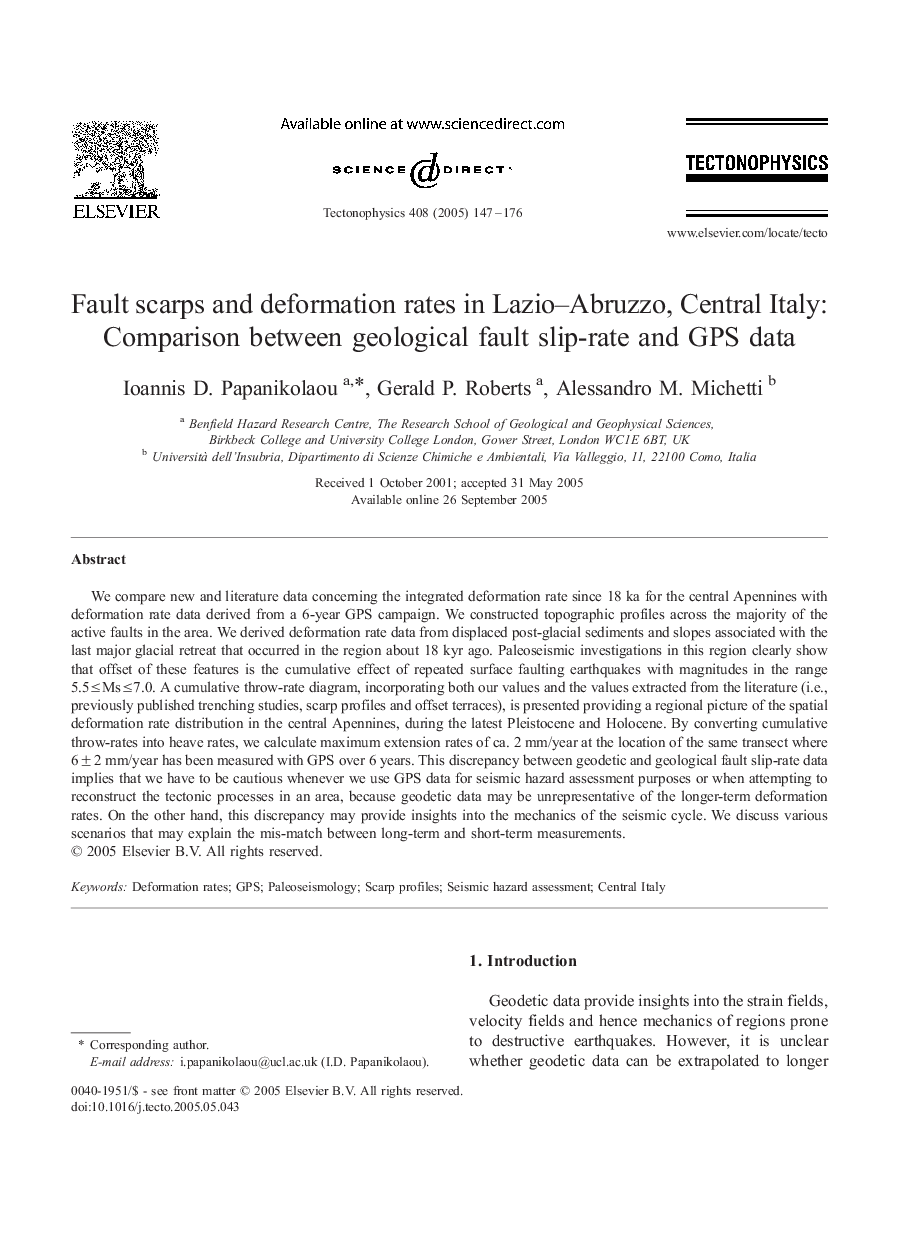| Article ID | Journal | Published Year | Pages | File Type |
|---|---|---|---|---|
| 9527033 | Tectonophysics | 2005 | 30 Pages |
Abstract
We compare new and literature data concerning the integrated deformation rate since 18 ka for the central Apennines with deformation rate data derived from a 6-year GPS campaign. We constructed topographic profiles across the majority of the active faults in the area. We derived deformation rate data from displaced post-glacial sediments and slopes associated with the last major glacial retreat that occurred in the region about 18 kyr ago. Paleoseismic investigations in this region clearly show that offset of these features is the cumulative effect of repeated surface faulting earthquakes with magnitudes in the range 5.5 â¤Â Ms â¤Â 7.0. A cumulative throw-rate diagram, incorporating both our values and the values extracted from the literature (i.e., previously published trenching studies, scarp profiles and offset terraces), is presented providing a regional picture of the spatial deformation rate distribution in the central Apennines, during the latest Pleistocene and Holocene. By converting cumulative throw-rates into heave rates, we calculate maximum extension rates of ca. 2 mm/year at the location of the same transect where 6 ± 2 mm/year has been measured with GPS over 6 years. This discrepancy between geodetic and geological fault slip-rate data implies that we have to be cautious whenever we use GPS data for seismic hazard assessment purposes or when attempting to reconstruct the tectonic processes in an area, because geodetic data may be unrepresentative of the longer-term deformation rates. On the other hand, this discrepancy may provide insights into the mechanics of the seismic cycle. We discuss various scenarios that may explain the mis-match between long-term and short-term measurements.
Related Topics
Physical Sciences and Engineering
Earth and Planetary Sciences
Earth-Surface Processes
Authors
Ioannis D. Papanikolaou, Gerald P. Roberts, Alessandro M. Michetti,
